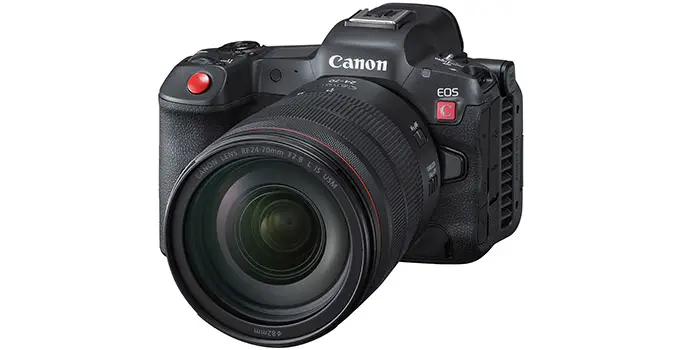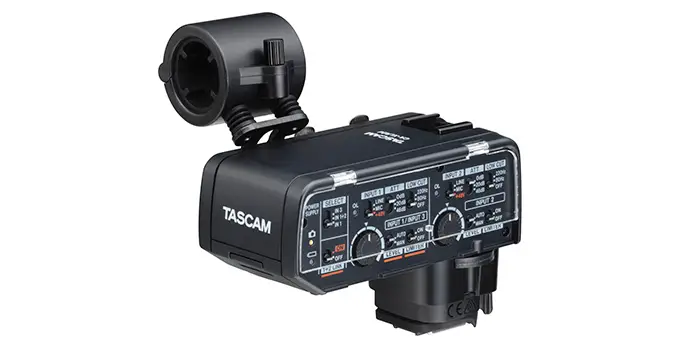
[ad_1]
When the R5 was released it was clear that Canon wanted to make a stills camera that was also very good at video. With the just announced R5 C, they were aiming for compact cinema camera with excellent stills – essentially the same stills system as the R5.
What we ended up with are two very similar cameras with significant differences when it comes to shooting video. It can easily complicate things if you are shopping for one. To best understand what changed between the R5 and R5 C, the guys at ProAV TV put together a list of the 10 main differences between the two models.
1. No Record Limits
This one is easy, since Canon put a fan in the R5 C it no longer suffers from the same critical overheating issues that plagued the original R5. This, combined with some basic firmware updates, allow the R5 C to record video with no limits. No more 29:59 limit.
2. Cinema EOS UI
A dedicated switch on the R5 C puts the camera into very distinct photo and video modes. In video mode the UI is completely different from other mirrorless cameras as it has the same UI and menu as Canon’s Cinema EOS line. This puts it more in line with a C70 than an R5 when shooting video. It also brings with it things like waveforms, false color, peaking, zebra, anamorphic, and other options usually left to true cinema cameras.

Image Credit: Canon
3. 8K Oversampling
Every basic record mode on the R5 C actually oversamples from the full 8K image. It makes the 4K HQ mode in the original R5 the native settings. Detail is better and noise is more controlled. It’s a big advantage if you are only planning on working in 4K. Even Full HD has a huge benefit. However, it doesn’t work in higher frame rates still.
4. 8K 60p
Not just unlocking 8K with longer recording, the R5 C even upped the max frame rate to 60p. It does have some weird power requirements meaning you’ll need to plug it into mains power or have a more powerful battery solution to keep functions like electronically-controlled lenses and autofocus (meaning all Canon RF lenses).
5. Multi-Function Shoe
Only just starting to show up on Canon cameras, their new Multi-Function Shoe brings a direct connection for more advanced accessories where both power and data can be transmitted through the shoe.
For video, this is a huge advantage as it now opens the door for the Tascam CA-XLR2d-C XLR Microphone Adapter which adds full-size XLR inputs and audio controls to the R5 C. There are also some other options like small shotgun microphones and likely some new things in the future.

Image Credit: Tascam
6. No IBIS
One big feature missing from the R5 C is in-body image stabilization. The R5 had a very good unit so seeing it removed is kind of a bummer. However, the R5 C does have a digital IS option and for many professionals there is an argument to be made that IBIS is unnecessary for cinema cameras. We covered a comparison already if you want to check that out.
7. Tally Lights & Timecode
The tweaked body design made room for some tally lights to be absolutely sure you are recording. Also, a bigger change is that it has a timecode in/out port on the side. It is the smaller DIN variety, but it’ll get the job done for syncing up with other cameras or audio recorders.
8. Dual Base ISO
Even though it is the same sensor, the R5 C does have an official dual native ISO with settings as 800 and 3200 when shooting in Canon Log 3. It’s possible the original R5 has the same performance, but the officialness of the setting makes it easy to set to custom buttons for fast switching between the two.

Image Credit: Canon
9. 10-Bit Log Without H.265
A weird limitation on earlier Canon mirrorless cameras was that to use the log profiles you needed to be shooting in 10-bit H.265/HEVC. You couldn’t use them at all with the more edit-friendly compressed options. The addition of XF-AVC options make it possible to record in log without shooting in the tough H.265 profile.
10. Wide DR
Along with the Cinema EOS UI are all the Cinema EOS profiles, including Wide DR. If you are planning on using the R5 C alongside other cinema cameras you can now more perfectly match the color profiles. Wide DR is also a faster option than log gammas since it is designed to look great straight out of the camera.
Would you pick up the R5 C over the R5 for your productions? Anything in particular help you make that choice?
[source: ProAV TV]
Order Links:
[ad_2]






